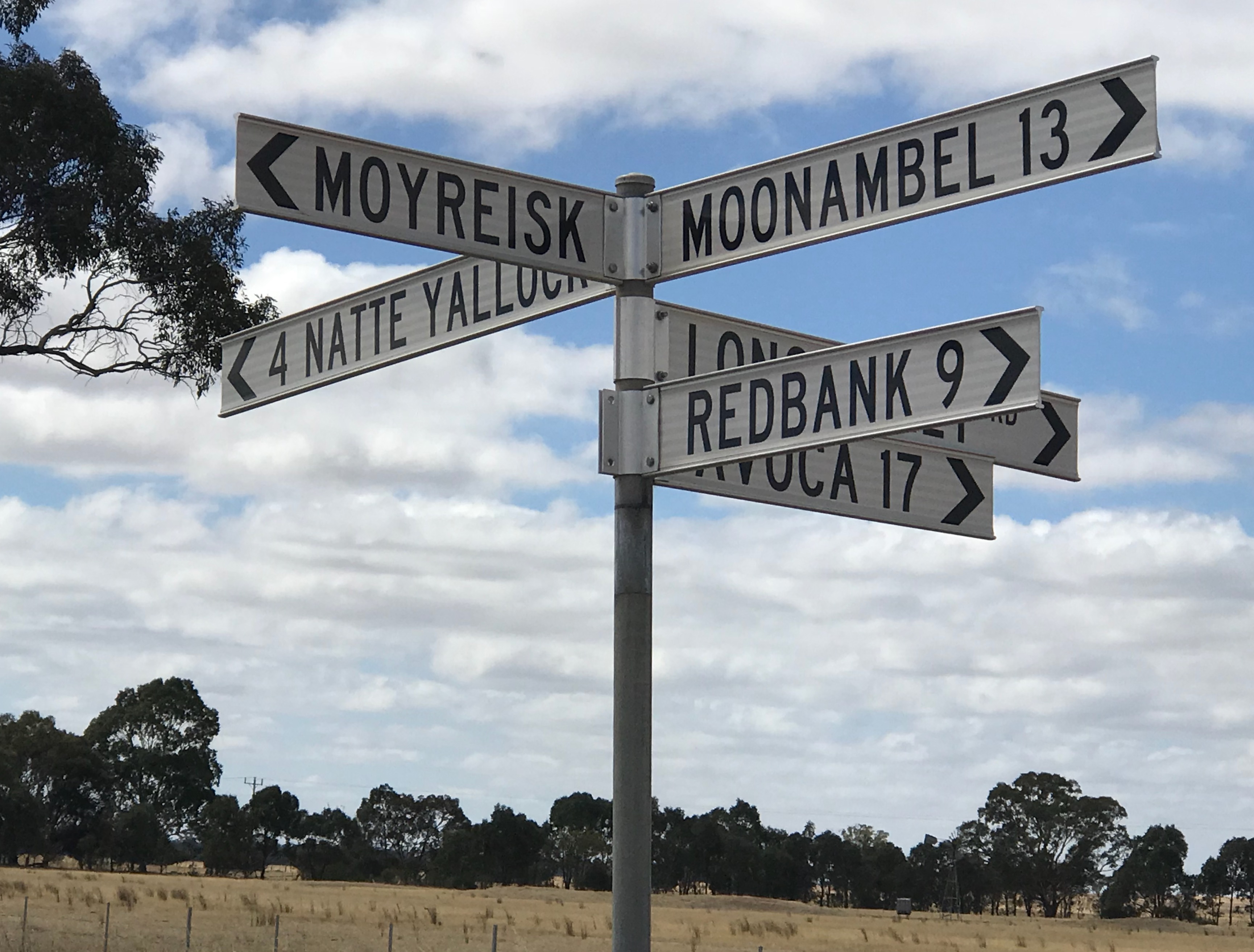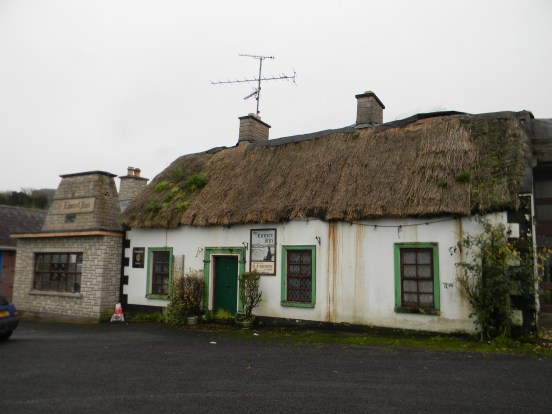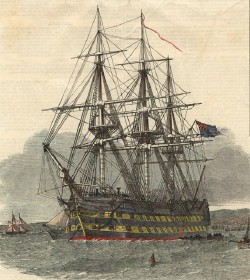My emigrant ancestor to Australia on the Sweeney line was my maternal 2nd great grandmother Mary Sweeney, our Cassidy matriarch, who I’ve previously written about here. Mary and her brother Terence emigrated to Australia as Bounty Immigrants from County Clare aboard the Roxborough Castle in 1839, aged 20 and 23 respectively. Their parents were stated as John Sweeney, farmer and his wife Johanna. Mary states she was a native of County Clare and Terence a native of Clones, County Clare.


The two led me a merry chase for many years about exactly where in Clare they came from. To complicate matters even more Terence’s certification was undertaken in Cork, why was this so? A visit to the grave of Mary Cassidy (nee Sweeney) at Glen Innes in 1987 had revealed the inscription ‘A native of Ennis, County Clare.’ Again, not much help, Ennis being the capital city of Clare, with so many Sweeney’s to choose from!
My Uncle Laurie was a great family historian and had researched the family back in the 1950’s. I inherited his papers when he died in 2006. Laurie had purchased all the possible birth, deaths and marriage of the extended Cassidy family in Australia. The breakthrough came when I found on the birth certificate of Mary’s daughter Margaret in 1859 a reference to her birthplace as Moresk, Clare, Ireland. It took some time to identify this as probably referring to Moyriesk Townland, a townland of just over a square mile in size, most of it located in Doora civil parish and about 77 acres in Clooney civil parish. Could Terence’s native place actually be Clooney, not Clones?



Moyriesk had been the home of the MacNamaras from the 17th Century. By 1837 it had been purchased by the family of Lord Fitzgerald and Vesey. Lord Fitzgerald was ‘in fee’ at the time of Griffith’s Valuation c1857, with tenants in Clooney by the names of Samson and Scanlan and in Doora, Hasset, Molony, Hartigan, Duffy and Symth. No Sweeneys to be seen. On researching Moyreisk I discovered a small county town in Victoria, Australia of the same name. This of course meant an impromptu excursion in 2016 hoping for new speculative research ideas! Funnily enough it turned out that ancestors on my paternal side were one of the earliest landowners in the district, but more on that later. Further research established that the town had been named after Moyriesk Station, a station of 43,200 acres established by John Fitzgerald Leslie Foster (Colonial Secretary of Victoria 1853-1854 and descendant of the Fitzgerald-Veseys), presumably named after the family estate in Ireland. This brought about renewed speculation whether other close family of our Sweeneys may have emigrated to Victoria and worked on the station.
When Irish Catholic parish records finally came online, it was Mary’s baptismal record that revealed the location of her fathers family as the townland of Rathclooney. How lucky we were, records for County Clare only commenced from 1st January 1816 and Mary was baptised on 21st May 1816. Her parents were named as John Sweeney and Joan Enright, with the priest indicating that the family resided in Rathclooney in the parish of Clooney. Catherine McNamara was her sponsor. There were no other baptisms for any other children for John and Joan (or Johanna), but they may have been born before 1816. According to the shipping records, Terence was said to be about 3 years older than Mary, so it is quite conceivable that there may have been more older children.
When we visited in 2017 we found the old church at Clooney was now a ruin. However the baptismal font from which John and Johanna would have had their children baptised had been preserved and is now located in the new Clooney church nearby.


There were no Sweeney’s recorded in the List of Freeholders >40 shillings of 1821, but John does appear in the Tithe records for Rathclooney in 1825. The landholding was quite significant totalling 61 acres, made up of 20 acres of 1st quality land, 20 acres of 2nd quality land and 21 acres of 3rd quality land. John was shown as sharing this with John Moloney, Patrick McNamara, John Doloughty, Daniel Hehir, Connor McNamara, Francis McNamara and James McNamara. The tithes payable on the holding amounted to £2 15 shillings ¼ pence.
There were 125 Sweeney families in County Clare in the 19th century and in 1815 there were at least 15 Sweeney families in the Quin-Clooney parish alone. With so many families of the same surname it has been difficult to piece the rest of the family together. I had established that there was a Daniel Sweeney living in Rathclooney at the time of Griffiths Valuation in 1855 but remained unsure whether he was a relation. Other tenants residing with him at the time had similar names to those recorded in the 1825 Tithe – MacNamara, Hehir, Moloney. It seemed likely, but we lacked paper evidence to prove the connection.
My DNA surprise
On our visit to Clare in 2017 I had arranged to meet up with Antoinette from the Clare Heritage Genealogy Centre. When we arrived she initially expressed some disappointment that she may not have found out anything new for me about my Sweeney family. However she went on to say there was a Sweeney family that might be the same one but she couldn’t be sure. John Sweeney of Rathclooney, had married Honor Murphy of Newgrove, Tulla on the 30th April, 1820. The witnesses at the marriage were Matthew Murphy, James Sweeney and Mary Hennessy. Could Johanna have died soon after Mary’s birth and John married again? John and Norahs eldest son Daniel was the tenant who had been listed in Griffiths Valuation at Rathclooney.
As soon as she mentioned the name Honora Murphy, I squealed with delight. The name was very familiar to me having researched the descendants of their son John Michael and his family in Victoria, Australia. My family had a number of DNA matches to theirs but we had not been able to tie them together through the paper records. Excitedly, we compared notes about the various descendants we each knew about. I also benefited from a conversation between Antoinette and Joe McNamara (the former occupant of the Sweeney land) about 20 years earlier who told her what had happened to various family members. We soon pieced together the known family of John Sweeney.
John and Johanna (Enright or Hanrahan)
John and Honor Murphy
By the time of Griffiths Valuation in 1855, John’s eldest son Daniel was holding the property at Rathclooney and leasing the property from Stafford O’Brien (Lot 15). The property consisted of a house, office (shed) and land. The land area was in 2 lots comprising 9 acres 32 perches which was valued at £4 12 shillings. His house, situated on this lot was valued at 8 shillings which brought the total valuation to £5. The 2nd lot amounted to 5 acres 3 roods. Daniel was shown sharing this with John McNamara, Daniel Hehir, Michael McNamara, Anne McNamara, Michael Moloney and Margaret McNamara. His share of this land was valued at 5 shillings.
Armed with my map from Griffiths we set out to find the old Sweeney land. Looking to clarify our exact location, I approached a neighbour John Daffy. John provided me the final steps to find the cottage and some wonderful information about the Sweeney’s and MacNamara’s that later lived there. John told me the land had been split up into smaller parcels since the Sweeney’s time and that ‘the Sweeney’s ran an old country shop from the homestead, selling cigarettes. A Sweeney from America came about 20 years ago, but there are no Sweeney’s here now.‘ We found the homestead quite easily. Whilst the homestead and shop would have been from a much later time than when my John Sweeney was living here, it was a wonderful feeling to be standing on the same land my ancestors had farmed nearly 200 years ago.


I was also very pleased to be referred by John Daffy to the Kilaghitis Cemetery near Spancihill, where he knew John’s son Daniel, his wife Bridget and several other family members were buried.


Ancestors and family of John Sweeney
It was through the examination of the baptism and sponsor records of the children of John and Honor and the information from John Daffy about the MacNamaras, that I was able to continue to piece the various members of the family together. I concluded that my John Sweeney was probably the son of another Daniel Sweeney. Daniel Sweeney (senior) was listed in the 1821 Freeholders List for Rathclooney. Daniel and his wife (who is probably a MacNamara) appear to have had at least 3 children, it’s highly likely there were more.
- John Sweeney bef 1795, married Johanna Hanrahan/Enright (my third great grandparents);
- James Sweeney bef 1800
- Mary Sweeney bef 1807, married Patrick Enright
Daniel’s father is believed to be Roe Swyney of Moyriesk. Roe would be my fifth great grandfather, he had at least three daughters and one son. The Irish tended to have large families so there still may be a number of children yet to be identified.
- Daniel Sweeney bef 1770, married McNamara (my fourth great grandparents);
- Margaret Sweeney bef 1772, married O’Donnell
- Martha Sweeney bef 1773, married O’Connell
- Female Sweeney bef 1780, married Hehir
Based on the wedding notice of his daughter Margaret, Roe was reasonably well off and likely a gentleman.
Ennis Chronicle, Monday, November 29, 1790:
Married last Thursday, Mr. John O’Donnell of Dunmore to Miss Margaret Swieny, daughter of Mr. Roe Swieny of Moriesk, an amiable and accomplished young lady, with a handsome fortune.
Burke’s Peerage also described his daughter (Martha) as the ‘possible heiress of Roe Swieny’ when she married Maurice O’Connell in 1791.

Family anecdotes had always suggested a family connection to the famous ‘Liberator of Ireland’ Daniel O’Connell. After many years of research and with many thanks to my 6th cousin Liam (who has collaborated with me on this family since 2012) the connection was finally found. Roe’s daughter Martha married Maurice O’Connell in 1791. Maurice was a third cousin to Daniel O’Connell but an even closer relation to Daniels wife Mary O’Connell, she was his 1st cousin once removed. Whilst somewhat distant and only by marriage, I expect that the family connection would have been a very proud one for most Irishmen at that time!
Autosomal DNA Connections
Autosomal testing has already confirmed a number of branches of John’s family, including connections with descendants of both wives, Johanna Enright Hanrahan and Honor (Norah) Murphy. Matches beyond third cousin relationships who only have their results at AncestryDNA have been marked as ‘DNA Tentative’ as they cannot be confirmed through ‘segment triangulation’ as AncestryDNA does not provide segment data. We have not yet been able to get back to the next generation so are looking for descendants of Roe Sweeney c1745, Daniel Sweeney c1770 and other children of John Sweeney to be able to compare DNA. The following chart shows the descendant lines that have been confirmed to date. Click here to view a larger image.
Autosomal analysis has confirmed DNA through the following children of John.
- Terence 1813 – Descendants in USA
- Mary 1816 – Descendants in New South Wales, Australia
- Daniel 1826 – Descendants in USA
- John 1839 – Descendants in Victoria, Australia
As to the remaining children, this is what we know of them. Can you add to this list, do you know of other potential siblings? Are you a descendant who has had their DNA tested?
- Ellen 1821 – May have married an Arthur but this is uncertain.
- Joan 1824
- Anna 1828
- Bridget 1831 – Married Michael Joseph Murphy. Possible descendants in New South Wales, Australia.
- Michael 1833 – Married Ann Curry. Possible descendants in New South Wales, Australia.
- Winifred 1836
Y-DNA – The male Sweeney line
Our best chance of being able to verify the patrilineal line of the Sweeneys is through Y-DNA. My fourth cousin Torin from the United States kindly tested for me back in 2016. Unfortunately to date, we have only had two matches. Both matches indicate their oldest patrilineal ancestors were from Ireland but neither carry the Sweeney surname.
Whilst we have confirmed autosomal DNA on this line up to the ancestral couple of John Sweeney and his wife Johanna Hanrahan, we would love to be able to have supporting evidence achieved through Y-DNA testing. If you are descended from Roe Sweeney c1745, Daniel Sweeney c1770 or John Sweeney c1795 can you help us compare Y-DNA? Please contact me if you are male, carry the Sweeney surname, can trace your descent to one of these three men and are willing to test.
More DNA evidence
The ongoing examination of the family groups associated with my Sweeney family has allowed me to connect more of our MacNamara family. This combined with ongoing genetic clues from my DNA research has led to more discoveries which will be the subject of a future post. Watch this space!
***************
Do you know more about the families mentioned in this post? If you are connected to any of them (particularly if you have DNA tested or are willing to take the Y-DNA test) I would love to hear from you! It’s the power of DNA that can help us breakthrough those brick walls in Ireland!
As always, please do not hesitate to contact me via this blog or by private message via Ancestry, Wikitree or Facebook.











































































































